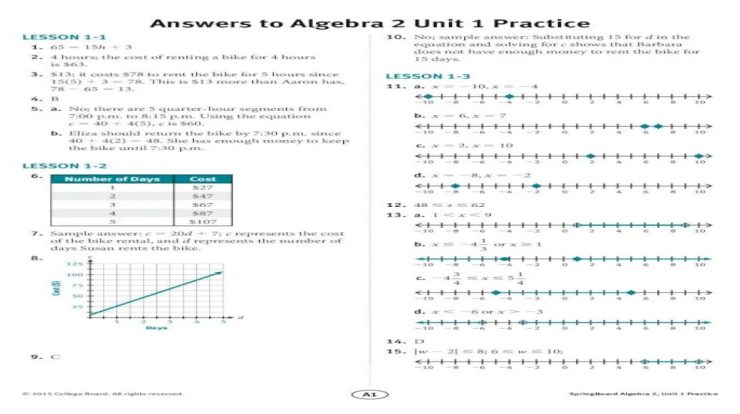Math makes me wanna die, a sentiment echoed by countless students, encapsulates the intense emotional and cognitive challenges associated with this subject. This exploration delves into the psychological, cognitive, and sociocultural factors that contribute to math aversion, offering insights and strategies to address this prevalent issue.
The narrative unravels the psychological toll that math can inflict, examining the role of math anxiety and its impact on mental well-being. It sheds light on how negative math experiences can lead to feelings of worthlessness, highlighting the profound emotional impact that mathematics can have on individuals.
Negative Emotional Impact of Mathematics: Math Makes Me Wanna Die

Mathematics, a subject that holds immense significance in our education systems and daily lives, can paradoxically trigger intense feelings of despair and frustration for many individuals. Understanding the psychological reasons behind this phenomenon is crucial to addressing the negative emotional impact of mathematics.
Math Anxiety and Its Impact on Mental Health
Math anxiety, a debilitating condition characterized by excessive fear and apprehension towards mathematics, plays a significant role in shaping negative math experiences. Individuals with math anxiety often experience intense physiological and cognitive reactions, such as racing heartbeats, sweating, and difficulty concentrating.
This anxiety can lead to avoidance behaviors, decreased motivation, and a negative self-image.
Negative Math Experiences and Feelings of Worthlessness
Unfavorable math experiences can further exacerbate negative emotions and feelings of worthlessness. Students who consistently struggle with mathematics may internalize these difficulties as a reflection of their own abilities, leading to self-doubt and a sense of inadequacy. Negative feedback from teachers, peers, or parents can reinforce these feelings, creating a vicious cycle that perpetuates math anxiety and erodes self-esteem.
Cognitive Challenges in Mathematics

Mathematics involves various cognitive processes, including problem-solving, reasoning, and working memory. However, certain cognitive differences and learning disabilities can significantly impact math performance.
Cognitive Processes in Math Problem-Solving
- Comprehension:Understanding the problem’s context and requirements.
- Planning:Developing a strategy to solve the problem.
- Execution:Carrying out the plan and performing calculations.
- Monitoring:Checking progress and adjusting the plan as needed.
Learning Disabilities and Cognitive Differences
Learning disabilities such as dyscalculia and cognitive differences like working memory deficits can impair these cognitive processes. Individuals with dyscalculia may have difficulties with number sense, calculation, and spatial reasoning. Working memory deficits can hinder the retention of information necessary for problem-solving.
Cognitive Biases and Math Attitudes, Math makes me wanna die
Cognitive biases, such as the availability heuristic and confirmation bias, can contribute to negative math attitudes. The availability heuristic leads to overestimating the likelihood of events that are easily recalled, while confirmation bias reinforces existing beliefs by seeking information that supports them.
These biases can hinder open-mindedness and the development of positive math attitudes.
Social and Cultural Factors Influencing Math Motivation

Math motivation is not solely driven by individual factors; it is also influenced by the social and cultural context in which individuals learn and interact. These factors shape our perceptions, expectations, and beliefs about math, impacting our motivation and engagement with the subject.
Role of Social Expectations and Cultural Stereotypes
Society often holds certain expectations and stereotypes about who is good at math and who is not. These stereotypes can create a self-fulfilling prophecy, where individuals who believe they are not good at math may avoid challenging themselves and underperform, while those who believe they are good at math may excel.
Cultural stereotypes can also reinforce these expectations, leading to a lack of motivation and engagement among certain groups.
Impact of Peer Pressure and Classroom Dynamics
Peers and classroom dynamics play a significant role in shaping math motivation. Students who are surrounded by peers who value and enjoy math may be more motivated to engage with the subject. Positive classroom environments, where students feel supported and encouraged, can also foster math motivation.
Conversely, negative peer pressure or unsupportive classroom environments can discourage students from pursuing math.
When math starts to drive me up the wall, I find solace in the words of “He Aqui Os Doy Potestad” here . The message of empowerment and overcoming adversity resonates deeply, reminding me that even in the face of daunting math problems, I have the power to persevere.
Influence of Socioeconomic Status and Educational Opportunities
Socioeconomic status and educational opportunities can influence math attitudes and motivation. Students from disadvantaged backgrounds may have limited access to quality math education, which can lead to lower levels of math confidence and motivation. Lack of access to resources, such as tutors or math-related extracurricular activities, can further exacerbate these disparities.
The Role of Educators in Addressing Math Aversion

Educators play a pivotal role in shaping students’ attitudes towards mathematics. By creating inclusive and supportive learning environments, fostering positive teacher-student relationships, and employing effective teaching strategies, educators can help alleviate math aversion and cultivate a love of learning in students.
Creating Inclusive and Supportive Math Classrooms
Creating an inclusive and supportive math classroom involves fostering a sense of belonging, providing access to resources, and promoting collaboration among students. This can be achieved through:
- Establishing clear expectations and providing differentiated instruction to cater to students’ diverse learning styles.
- Creating a classroom culture that values mistakes as opportunities for learning and encourages students to ask questions.
- Providing access to technology and manipulatives to enhance understanding and make math more engaging.
- Promoting peer support and collaboration through group work and study sessions.
Building Positive Teacher-Student Relationships
Positive teacher-student relationships are essential for creating a supportive learning environment. Teachers can build these relationships by:
- Showing genuine care for students’ well-being and creating a safe and respectful classroom atmosphere.
- Listening to students’ perspectives and valuing their input.
- Providing timely and constructive feedback that focuses on growth and improvement.
- Celebrating students’ successes and acknowledging their effort.
Effective Teaching Methods
Effective teaching methods can foster math confidence and make learning more enjoyable. These methods include:
- Using concrete manipulatives and real-world examples to make abstract concepts more tangible.
- Incorporating hands-on activities and games to make learning more engaging.
- Providing students with opportunities to apply their knowledge to solve problems and make connections.
- Using technology to enhance understanding and provide individualized learning experiences.
Strategies for Overcoming Math Aversion

Overcoming math aversion requires a multifaceted approach that addresses both the emotional and cognitive challenges associated with the subject. Effective strategies involve developing coping mechanisms, enhancing problem-solving skills, and accessing support systems.
Cognitive challenges in mathematics can stem from various factors, including difficulty understanding concepts, anxiety during problem-solving, and a lack of confidence in mathematical abilities. Addressing these challenges requires a combination of effective teaching methods, targeted practice, and a supportive learning environment.
Coping Mechanisms for Managing Math Anxiety
Anxiety can significantly hinder mathematical performance. Implementing coping mechanisms can help students manage their anxiety and approach math problems with greater confidence.
| Coping Mechanism | Description |
|---|---|
| Deep Breathing Exercises | Taking slow, deep breaths helps calm the nervous system and reduce anxiety levels. |
| Positive Self-Talk | Challenging negative thoughts and replacing them with positive affirmations can boost confidence and reduce anxiety. |
| Visualization | Mentally picturing oneself successfully solving math problems can help build confidence and reduce anxiety. |
Tips for Improving Math Problem-Solving Skills
Developing strong problem-solving skills is essential for overcoming math aversion. The following tips can help students improve their ability to approach and solve math problems effectively:
- Understand the problem thoroughly before attempting to solve it.
- Break down complex problems into smaller, manageable steps.
- Use visual aids, such as diagrams or charts, to represent the problem.
- Look for patterns or relationships within the problem.
- Don’t be afraid to ask for help from teachers, peers, or tutors.
Resources and Support Systems for Students Struggling with Math
Students struggling with math should not hesitate to seek support. Various resources and support systems are available to help them overcome their challenges:
- Math Tutors: One-on-one or group tutoring sessions can provide personalized support and guidance.
- Online Resources: Websites and apps offer interactive lessons, practice exercises, and video tutorials.
- Peer Study Groups: Joining study groups with peers can provide a supportive and collaborative learning environment.
- School Counselors: Counselors can provide emotional support, help students develop coping mechanisms, and connect them with resources.
FAQ Overview
Why does math make me feel so anxious?
Math anxiety stems from a combination of factors, including negative past experiences, fear of failure, and perceived lack of ability. It can manifest as physical symptoms, such as sweating and heart palpitations, as well as cognitive symptoms, such as difficulty concentrating and negative self-talk.
How can I improve my math problem-solving skills?
Practice regularly, break down problems into smaller steps, use visual aids, seek help when needed, and focus on understanding concepts rather than memorizing formulas.
What resources are available for students struggling with math?
Tutoring services, online resources, math clubs, and peer support groups provide valuable assistance to students who need additional support in math.
